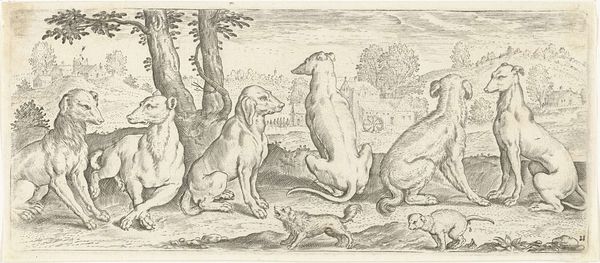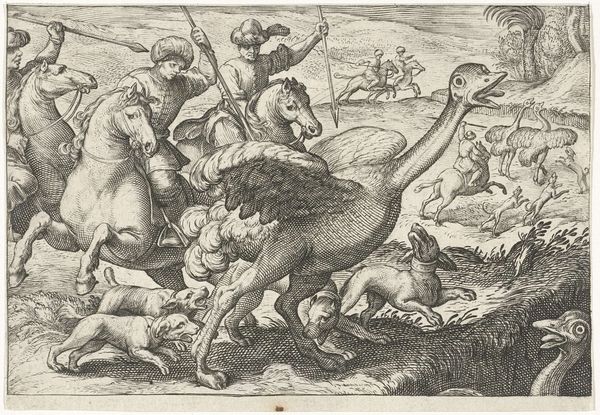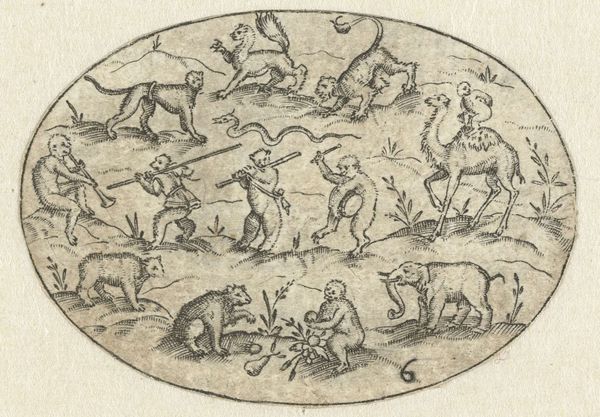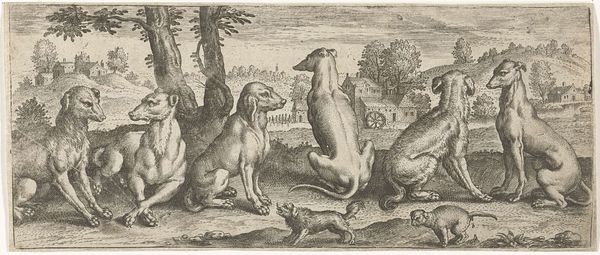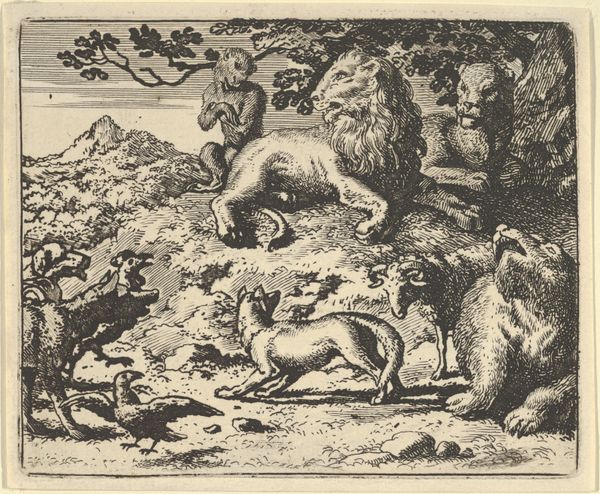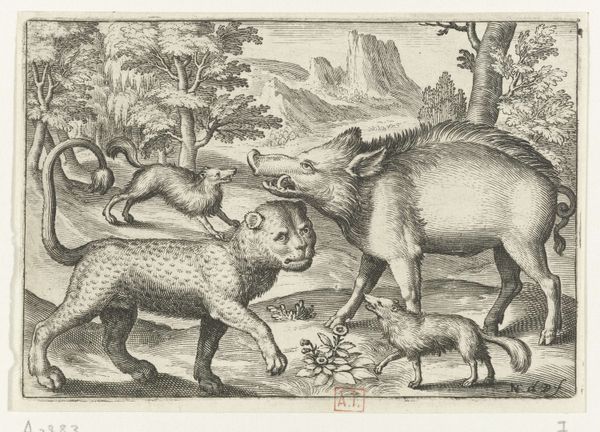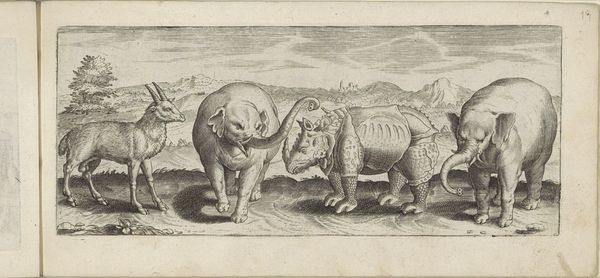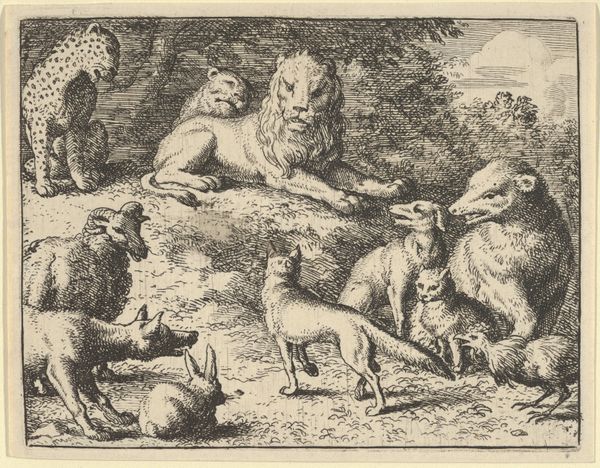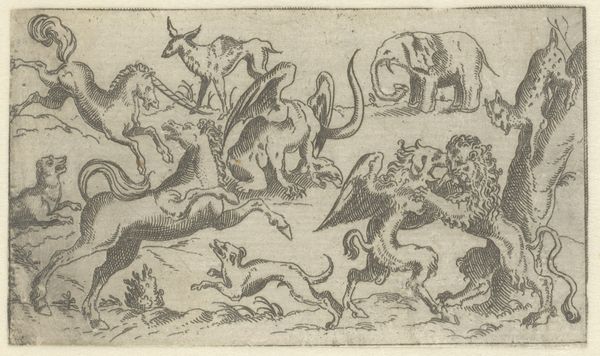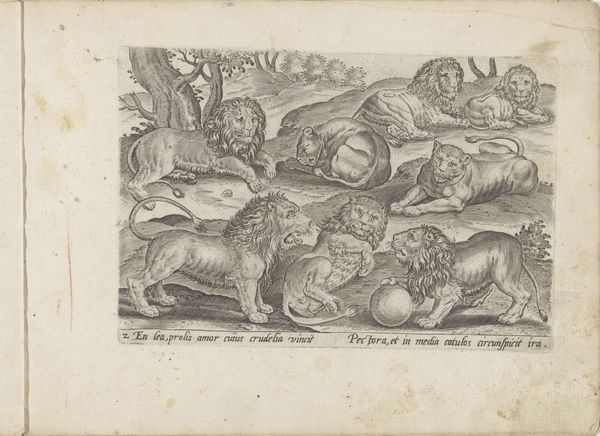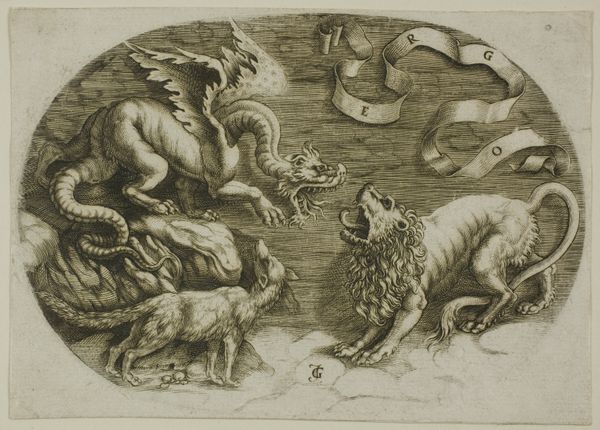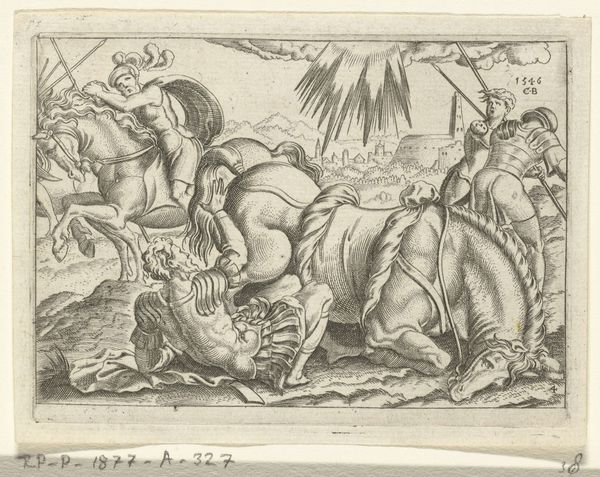
drawing, print, engraving
#
pencil drawn
#
drawing
#
animal
# print
#
11_renaissance
#
history-painting
#
northern-renaissance
#
engraving
#
realism
Dimensions: height 183 mm, width 256 mm
Copyright: Rijks Museum: Open Domain
Editor: So, this is "Studieblad met tekenvoorbeelden: diverse dieren" – or "Study Sheet with Drawing Examples: Various Animals" – dating back to between 1610 and 1672. It appears to be an engraving or print of animal studies. I'm struck by how varied the animals are. What do you make of this composition? Curator: It's a fascinating piece. Consider the context: this was a period when Europe was expanding its global reach. Images like this played a role in constructing a visual understanding – or, arguably, a *mis*understanding – of the wider world. What's absent tells us a lot. Editor: Absent? Curator: Yes, think about where this would have been circulated. Likely among an elite audience, yes? So what do you see in these images in relation to power dynamics of the time? How might the artist be implicitly commenting on concepts of ownership and control through representation? Editor: That's interesting. I see mostly depictions of animals that would have been found in Europe. Except for maybe the lion? How realistic were these depictions meant to be, do you think? Were people trying to represent reality as they understood it, or to impress each other? Curator: These "realistic" images contributed to scientific cataloging as well as imaginative interpretation. Note the presumed ‘correctness’ of portraying the animals, despite their origins or behaviors. How do such images reinforce cultural norms? Or promote specific ideals to shape collective understanding of animals? Editor: Hmm, I guess the very act of gathering all these animals on one page like specimens normalizes a certain worldview, and maybe justifies the dominance of the viewer over the natural world. Curator: Precisely. Images like these, seemingly innocent, served as crucial tools for shaping perceptions, influencing knowledge, and perpetuating cultural agendas. Editor: This makes me think about what other values and worldviews are packaged up within art and visuals, without our direct awareness. It's more than meets the eye! Curator: Agreed, our work reveals underlying ideologies subtly shaping artistic output and audience reception of visual and aesthetic notions.
Comments
No comments
Be the first to comment and join the conversation on the ultimate creative platform.
